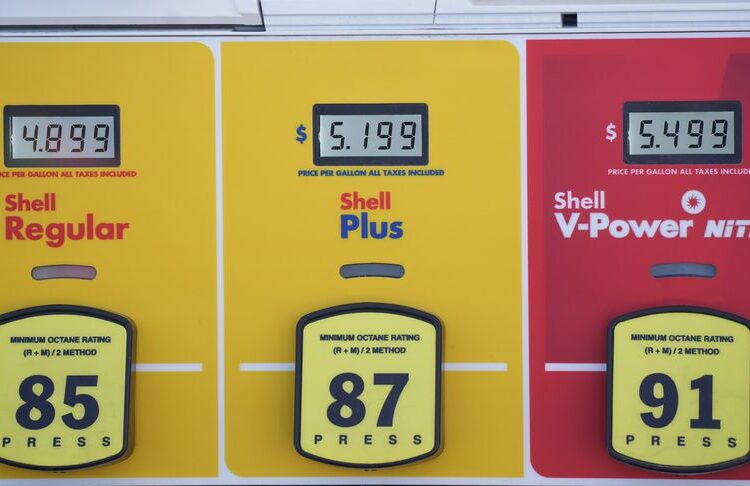DALLAS – The average price that Americans pay for gasoline is closing in on $5 a gallon, another drain on the wallets of consumers who are paying more for many other essentials too.
AAA said the nationwide average for regular was $4.97 a gallon, up a quarter in just the last week and $1.90 more than drivers were paying a year ago.
GasBuddy, a service that helps drivers find deals on gas, said the average surpassed $5 for the first time ever, AP reported.
Pump prices have been rising steadily for months, shooting past the $4 mark in early March. They track the cost of crude oil, which was rising even before Russia’s invasion of Ukraine drove oil even higher.
Fears of short supplies are being compounded by demand, which usually picks up around Memorial Day at the end of May – the unofficial start of summer and vacation trips in the US.
California has the highest average price, at $6.40 a gallon, according to AAA. Several other Western states and Illinois are higher than $5.50.
The lowest average is in Georgia, at $4.41.
Quentin McZeal of Oakland, California, said it used to cost him $100 to fill up his tank and now it’s more like $140-$160. The prices have forced him to change his behavior and make different choices, like turning down people who ask for rides unless they’re willing to kick in for gas.
“It´s a lot of other things I can´t do because I have to pay for gas, you know what I´m saying?” McZeal said. “Less food, less playtime because I got to get gas. I got to go to work, right?”
He blames the government, and the war in Ukraine, for the high gas prices.
While the $5 mark on average is new, Americans paid more for gasoline back in July 2008, when inflation is considered. The high of $4.11 a gallon then would be equal to about $5.40 a gallon today.
Americans aren’t the only ones paying more to fill up. This week, gasoline prices in the United Kingdom hit a record 182.3 pence ($2.30) per liter, or about $8.80 per gallon.
Analysts expect prices will keep rising until they get so high that demand falls – nobody knows exactly when or where that might be. In the meantime, any unexpected refinery shutdowns – for example, from a hurricane along the Texas and Louisiana Gulf Coast – could send prices spiraling higher.
“I’m afraid we’re not at the end of the road yet,” said GasBuddy analyst Patrick De Haan. “We have very little margin for error this summer. We need every barrel of refining capacity we can get.”
The pandemic led to refinery closures that have caused US refining capacity to drop by about 800,000 barrels a day since the start of 2020, according to government figures. That has put pressure on remaining refiners to run hard to meet rising demand.






Discussion about this post